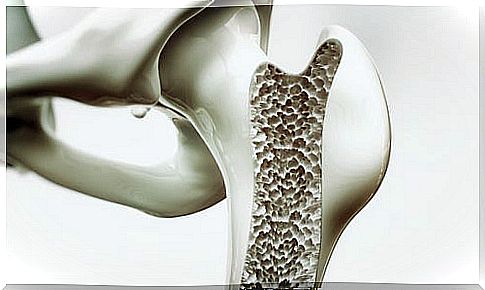What Is Marfan Syndrome?
Marfan syndrome is a serious health problem, affecting men and women equally around the world. Thanks to scientific advances, nowadays it no longer causes as much mortality as before and cases of early death are increasingly rare.

Marfan syndrome is a genetic disorder that causes serious connective tissue abnormalities. It is a serious disease, which often causes problems with the bones, eyes, heart, and blood vessels. It is estimated that it affects 1 in 5,000 people in the world.
This syndrome affects men and women equally, of all racial and ethnic groups. Sometimes it is inherited from one of the parents, but between 20 and 50 cases per 100 are due to a spontaneous genetic mutation. In those cases there is no family history.
Thanks to early diagnosis and treatment, mortality from Marfan syndrome has decreased considerably in the last 20 years. The life expectancy of those affected by this disease has gone from 45 to 72 years. There are fewer and fewer cases in which there is early mortality.
What is Marfan syndrome?

Marfan syndrome is a disorder of genetic origin, which causes problems in the connective or connective tissue. This tissue is made up of proteins. Its main function is to support bones, blood vessels, skin, and other organs.
This means that the connective tissue acts as a kind of “glue” between the cells, which allows the muscles, organs, etc. to be shaped. Also, connective tissue plays an important role in growth and development, during gestation and after birth.
On the other hand, this tissue plays an important role in cushioning the joints. In Marfan syndrome all these functions are impaired. In general, the areas that are most affected are the skeleton, heart, eyes and blood vessels .
Causes
The cause of Marfan syndrome is a genetic disorder that occurs on chromosome 15. This abnormality leads to difficulties in the manufacture of a protein called fibrillin. This is an essential part of the connective tissue, therefore, it is altered.
The most common is that this anomaly is transmitted from parents to children. However, in 25% of cases neither parent is affected by this problem. What happens in these cases is that a spontaneous mutation occurs that leads to this problem.
The faulty gene also affects abnormal growth of long bones in the body. The most common is that all together affect the following parts of the body: lung tissue, aorta artery, eyes, skin and the tissue that lines the spinal cord.
Symptoms

The manifestations of Marfan syndrome are variable. Even two affected people from the same family may have different symptoms and varying levels of severity. However, the usual is that the following alterations are present:
- In the skeleton. These are generally very tall and thin people, with longer-than-average limbs and greater joint mobility than average. The fingers are quite long and thin, similar to a spider.
- The face is long and angular. They generally have a small jaw, sunken eyes, and a high, arched palate. They tend to have crowded teeth. Depression in the sternum, spinal deviations, and similar problems are common.
- In the heart and blood vessels. Sometimes there is dilation of the aorta and other problems with the valves of the heart, such as mitral valve prolapse or aortic regurgitation. Problems in the circulatory system are the main causes of mortality in these cases.
- In the eyes. It is not uncommon for there to be serious eye problems, such as cataracts, myopia, lens dislocation, and retinal detachment.
- Others. They include collapsed lung or pneumothorax, stretch marks on the shoulders and buttocks, inguinal hernias, and others.
Diagnosis
There is no specific test to diagnose Marfan syndrome. Added to this is the fact that between 40 and 60% of those affected do not have any symptoms. Doctors generally diagnose the problem using the following methods, together:
- Family history check.
- Analysis of the clinical history.
- Physical exploration.
- Heart exams.
- Eye exams.
When to go to the doctor?
Long limbs, as well as dislocation of the lens and dilatation of the aorta in the patient, or in someone in his family, are highly suggestive of Marfan syndrome. Other symptoms such as aneurysm, visual defects and problems with the heart valves, also suggest the presence of this disease.
The doctor will ask the patient about their specific symptoms and if they have a family history. Any details about the patient’s medical history will help the professional to establish the diagnosis.









